A 10 C charge is given to a conducting spherical shell, and a-3 C point charge is placed inside the shell. For this arrangement, find the correct statement(s).
The charge on the inner surface of the shell will be +3C, and it can be distributed uniformly or nonuniformly
The charge on the inner surface of the shell will be +3C, and it can be distributed would be uniform.
The net charge on the outer surface of the shell will be_7C, and its distribution can be uniform or nonuniform
The net charge on the outer surface of the shell will be +7C, and its distribution would be uniform.
The correct Answer is:A, D
To solve the problem, we need to analyze the situation involving a conducting spherical shell with a charge distribution. Here’s a step-by-step breakdown of the solution:
Step 1: Understand the Charge Distribution
We have a conducting spherical shell that has a total charge of +10 C. Inside this shell, there is a point charge of -3 C.
Step 2: Determine the Charge on the Inner Surface
According to Gauss's law, the charge induced on the inner surface of a conductor is equal in magnitude and opposite in sign to the charge enclosed within it. Therefore, since there is a -3 C charge inside the shell, the inner surface of the shell will have a charge of +3 C.
Step 3: Calculate the Charge on the Outer Surface
The total charge on the shell is +10 C. Since the inner surface has +3 C, the charge on the outer surface can be calculated as follows:
Charge on outer surface=Total charge−Charge on inner surface=10C−3C=7C
Step 4: Analyze the Distribution of Charges
- The charge on the inner surface (+3 C) can be distributed either uniformly or non-uniformly depending on the position of the -3 C charge. If the -3 C charge is at the center, the distribution will be uniform; otherwise, it will be non-uniform.
- The charge on the outer surface (+7 C) will always be uniformly distributed because it is a conductor and the charges will move to the outer surface and distribute evenly.
Step 5: Evaluate the Statements
1. Statement A: The charge on the inner surface of the shell will be +3 C and can be distributed uniformly or non-uniformly. (Correct)
2. Statement B: The charge on the inner surface of the shell will be +3 C and will be distributed uniformly. (Incorrect, as we cannot confirm uniform distribution without knowing the position of the -3 C charge)
3. Statement C: The net charge on the outer surface of the shell will be -7 C and its distribution can be uniform or non-uniform. (Incorrect, the charge is +7 C, not -7 C)
4. Statement D: The net charge on the outer surface of the shell will be +7 C and its distribution will be uniform. (Correct)
Final Conclusion
The correct statements are A and D.
---
We have a conducting spherical shell that has a total charge of +10 C. Inside this shell, there is a point charge of -3 C.
According to Gauss's law, the charge induced on the inner surface of a conductor is equal in magnitude and opposite in sign to the charge enclosed within it. Therefore, since there is a -3 C charge inside the shell, the inner surface of the shell will have a charge of +3 C.
The total charge on the shell is +10 C. Since the inner surface has +3 C, the charge on the outer surface can be calculated as follows:
Charge on outer surface=Total charge−Charge on inner surface=10C−3C=7C
- The charge on the inner surface (+3 C) can be distributed either uniformly or non-uniformly depending on the position of the -3 C charge. If the -3 C charge is at the center, the distribution will be uniform; otherwise, it will be non-uniform.
- The charge on the outer surface (+7 C) will always be uniformly distributed because it is a conductor and the charges will move to the outer surface and distribute evenly.
1. Statement A: The charge on the inner surface of the shell will be +3 C and can be distributed uniformly or non-uniformly. (Correct)
2. Statement B: The charge on the inner surface of the shell will be +3 C and will be distributed uniformly. (Incorrect, as we cannot confirm uniform distribution without knowing the position of the -3 C charge)
3. Statement C: The net charge on the outer surface of the shell will be -7 C and its distribution can be uniform or non-uniform. (Incorrect, the charge is +7 C, not -7 C)
4. Statement D: The net charge on the outer surface of the shell will be +7 C and its distribution will be uniform. (Correct)
The correct statements are A and D.
Topper's Solved these Questions
- ELECTRIC FLUX AND GAUSS LAWBOOK - CENGAGE PHYSICS ENGLISHCHAPTER - ELECTRIC FLUX AND GAUSS LAWEXERCISE - Comprehension
36 Videos
- ELECTRIC FLUX AND GAUSS LAWBOOK - CENGAGE PHYSICS ENGLISHCHAPTER - ELECTRIC FLUX AND GAUSS LAWEXERCISE - Subjective type
7 Videos
- ELECTRIC FLUX AND GAUSS LAWBOOK - CENGAGE PHYSICS ENGLISHCHAPTER - ELECTRIC FLUX AND GAUSS LAWEXERCISE - Single Correct
40 Videos
- ELECTRIC CURRENT AND CIRCUITBOOK - CENGAGE PHYSICS ENGLISHCHAPTER - ELECTRIC CURRENT AND CIRCUITEXERCISE - Interger
8 Videos
- ELECTRIC POTENTIALBOOK - CENGAGE PHYSICS ENGLISHCHAPTER - ELECTRIC POTENTIALEXERCISE - DPP 3.5
15 Videos
Similar Questions
In between two point charges a conducting spherical shell having charge Q is placed as shown in the diagram. Assuming all charges to be positive, mark out the correct statement.
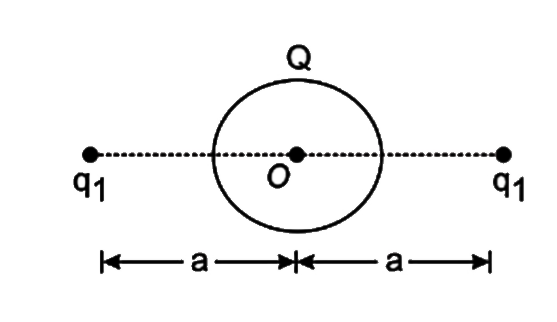
View SolutionWe have an isolated conducting spherical shell of radius 10cm. Some positive charge is given to it so that the resulting electric field has a maximum intensity of 1.8×106NC−1. The same amount of negative charge is given to another isolated conducting spherical shell of radius 20cm. Now, the first shell is placed inside the second so that both are concentric as shown in (Fig. 3.154).
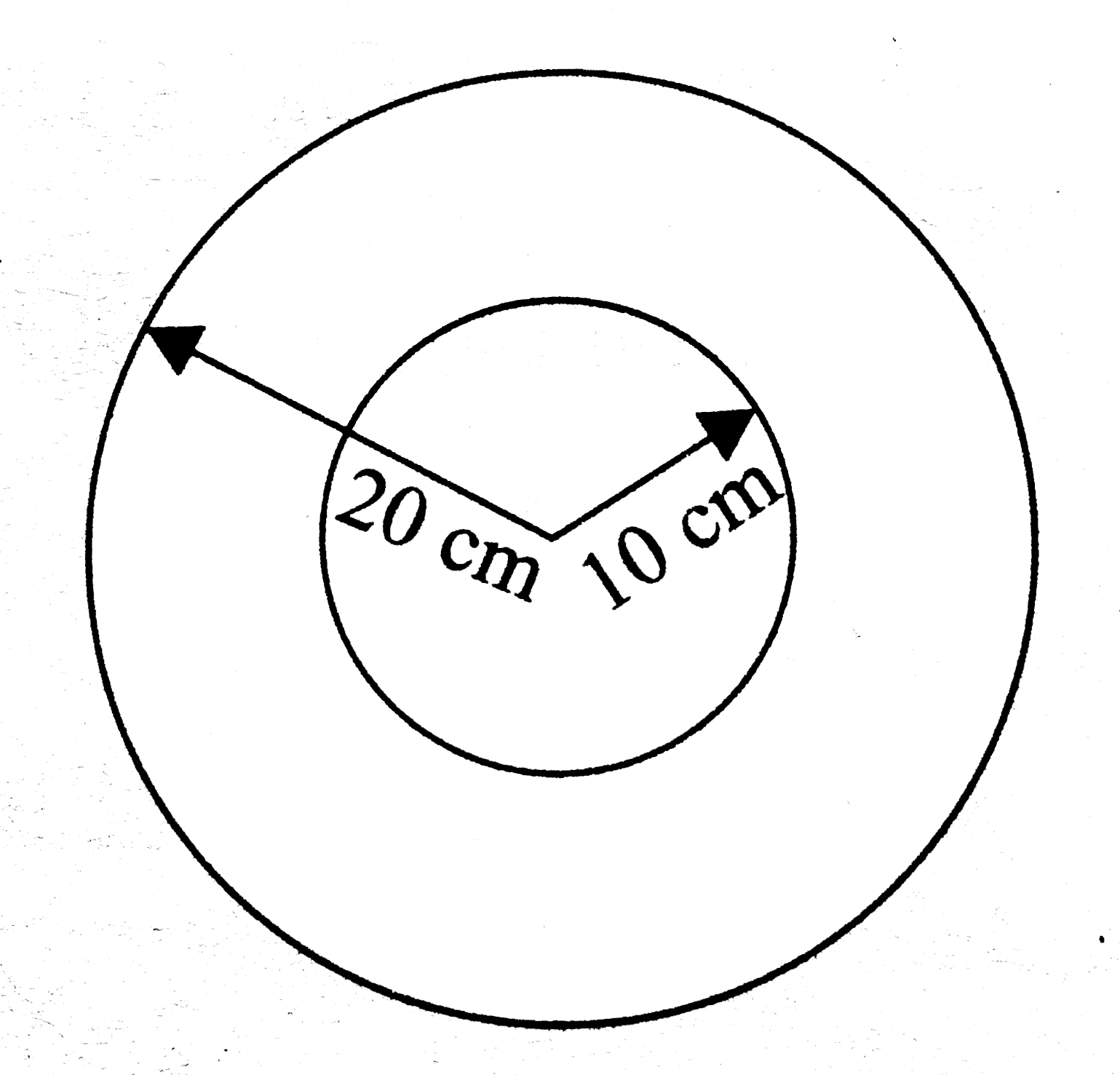 .
.
The electric potential at any point inside the first shell is.
View SolutionWe have an isolated conducting spherical shell of radius 10cm. Some positive charge is given to it so that the resulting electric field has a maximum intensity of 1.8×106NC−1. The same amount of negative charge is given to another isolated conducting spherical shell of radius 20cm. Now, the first shell is placed inside the second so that both are concentric as shown in (Fig. 3.154).
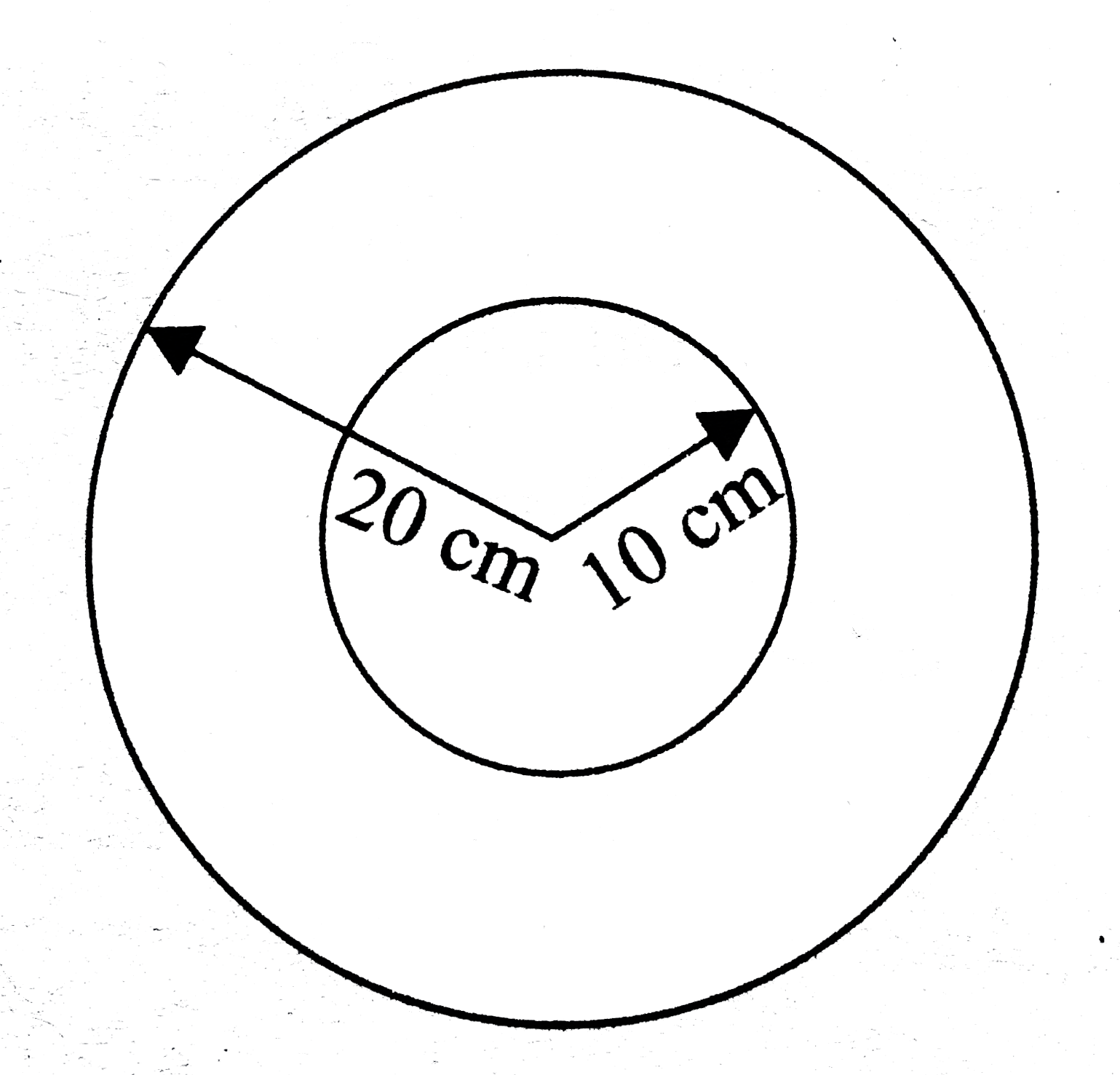 .
.
The electric field intensity just inside the outer sphere.
View SolutionWe have an isolated conducting spherical shell of radius 10cm. Some positive charge is given to it so that the resulting electric field has a maximum intensity of 1.8×106NC−1. The same amount of negative charge is given to another isolated conducting spherical shell of radius 20cm. Now, the first shell is placed inside the second so that both are concentric as shown in (Fig. 3.154).
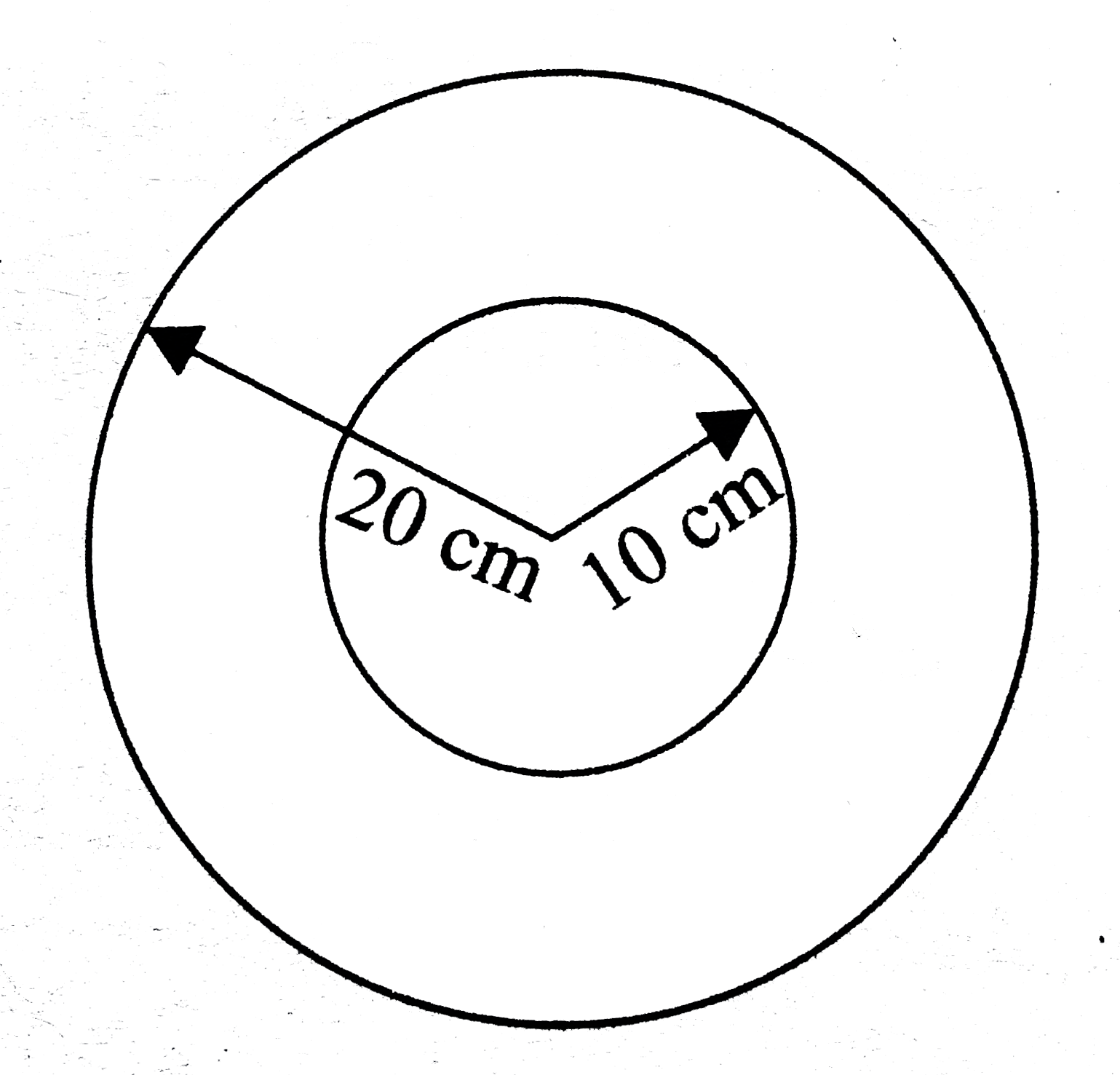 .
.
If both the spheres are connected by a conducting wire, then.
View SolutionWe have an isolated conducting spherical shell of radius 10cm. Some positive charge is given to it so that the resulting electric field has a maximum intensity of 1.8×106NC−1. The same amount of negative charge is given to another isolated conducting spherical shell of radius 20cm. Now, the first shell is placed inside the second so that both are concentric as shown in (Fig. 3.154).
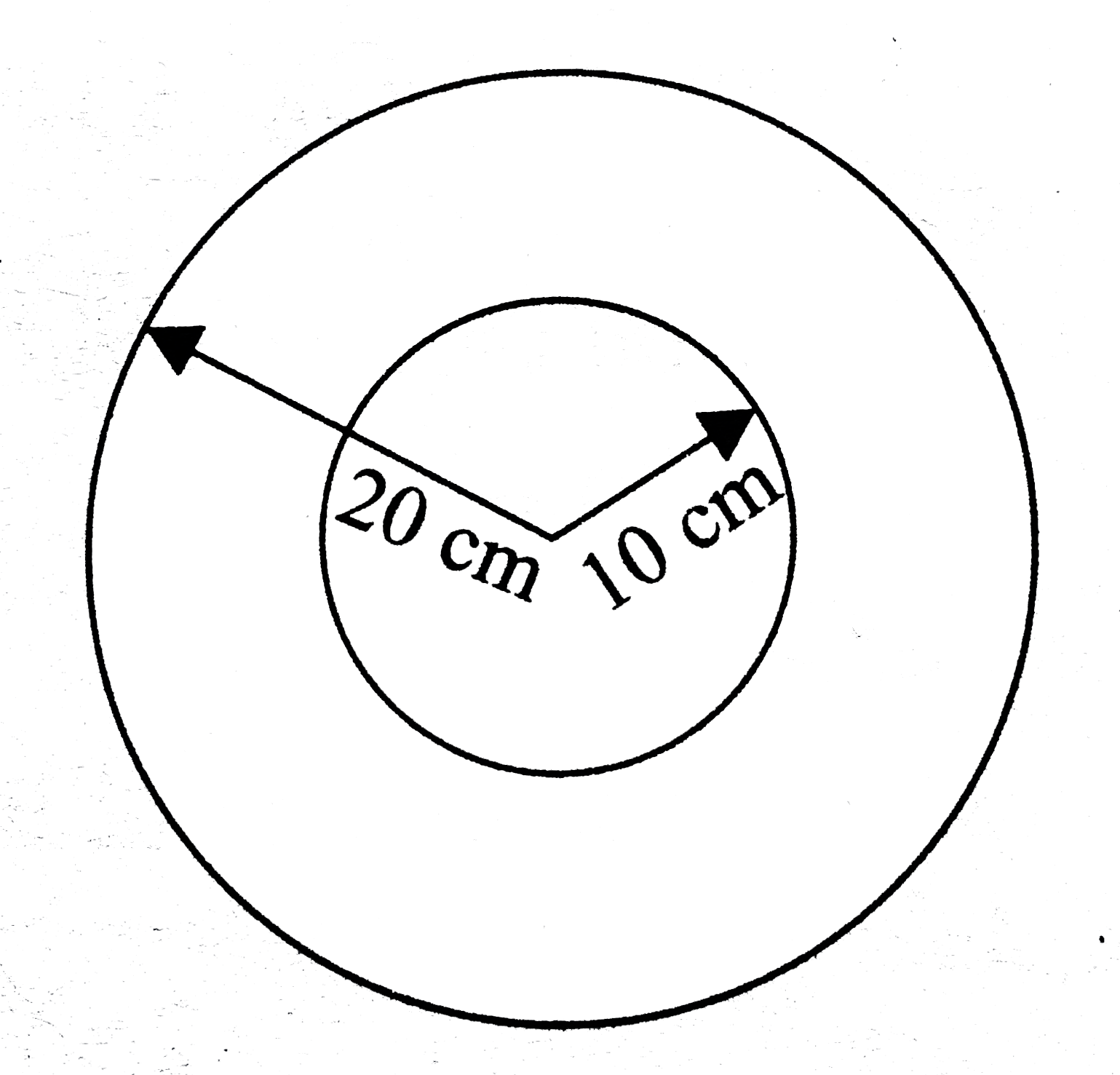 .
.
The electrostatic energy stored in the system is.
View SolutionShown in the figure a spherical shell with an inner radius 'a' and an outer radius 'b' is made of conducting metarial. A charge +Q is placed at the centre of the spherical shell and a total charge -q s placed on the shell. Charge -q is districuted on the surfaces as :
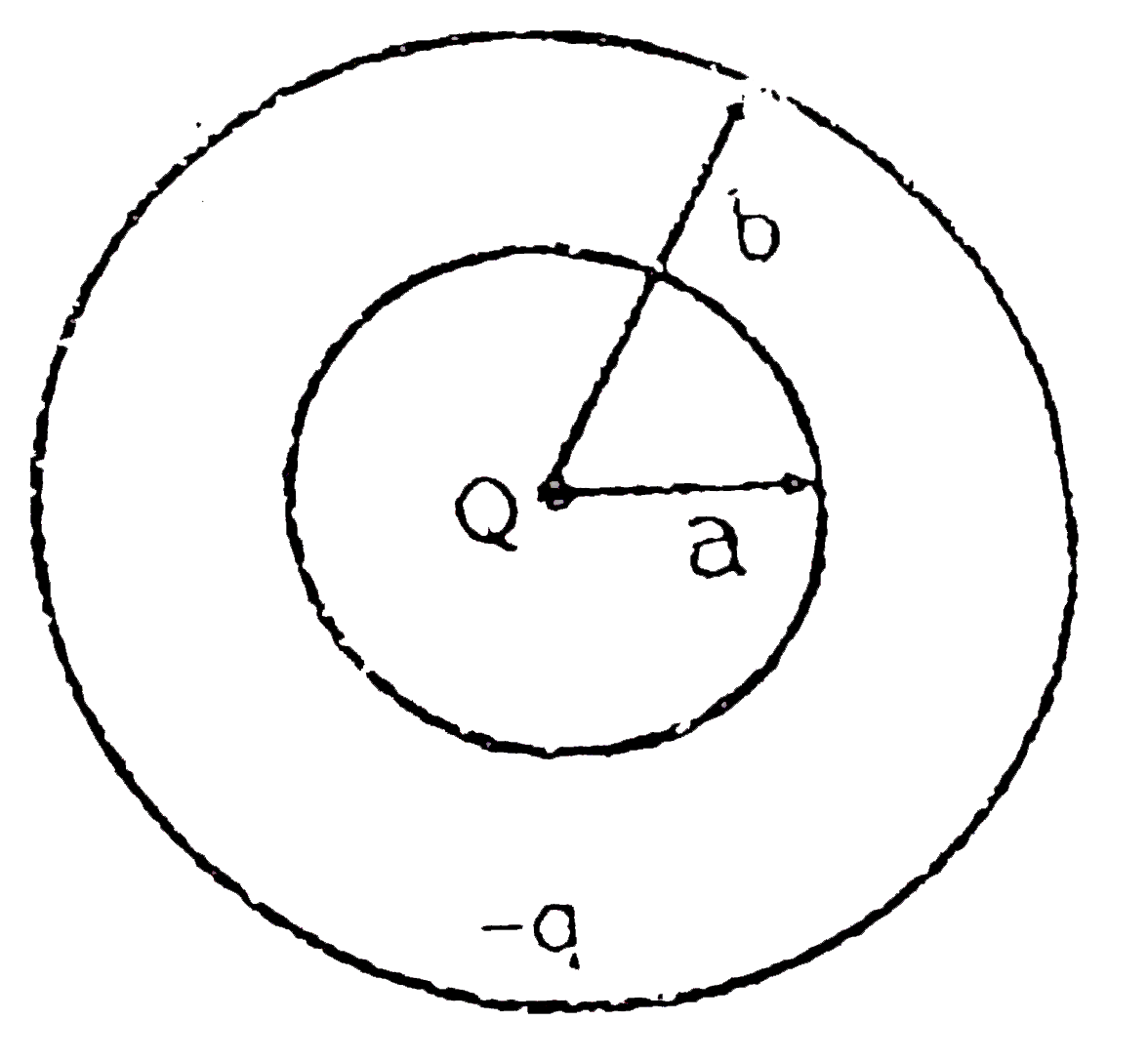
View SolutionA uniformly charged non-conducting spherical shell is given +q charge and a point charge -q is placed as shown. The electric field lines will be

View SolutionInside a charged thin conducting shell of radius R, a point charge +Q is placed as shown in figure potential of shell may be
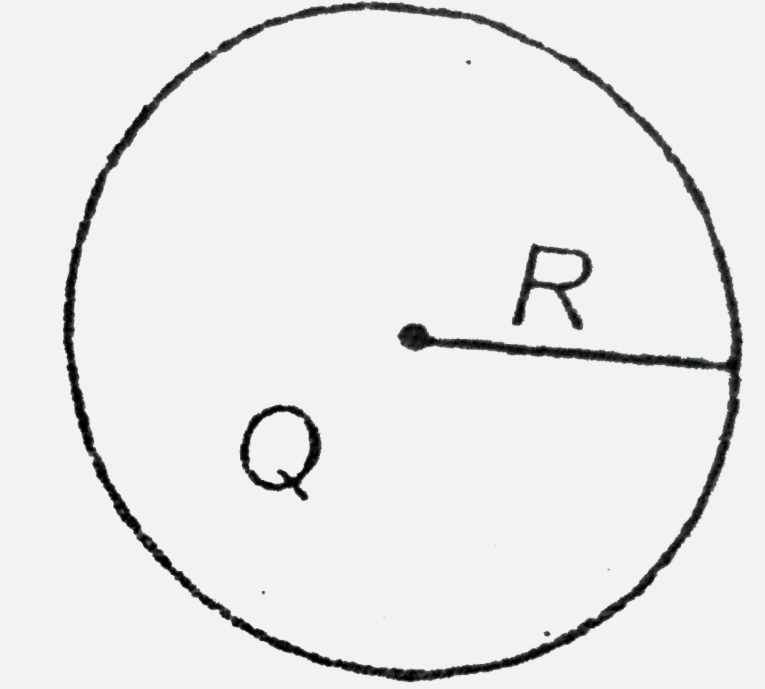
View SolutionA point charge q ie kept inside an uncharged conducting shperical shell . The radius of the shell is R and the charge is kept inside the shell at a distance x from the centre . Identify thet correct statement .

View SolutionFigure shows a point charge q, placed at the centre of a hollow conducting shell and a point P , outside the shell. The distance between centre and point P is r. Select the correct alternative (s).
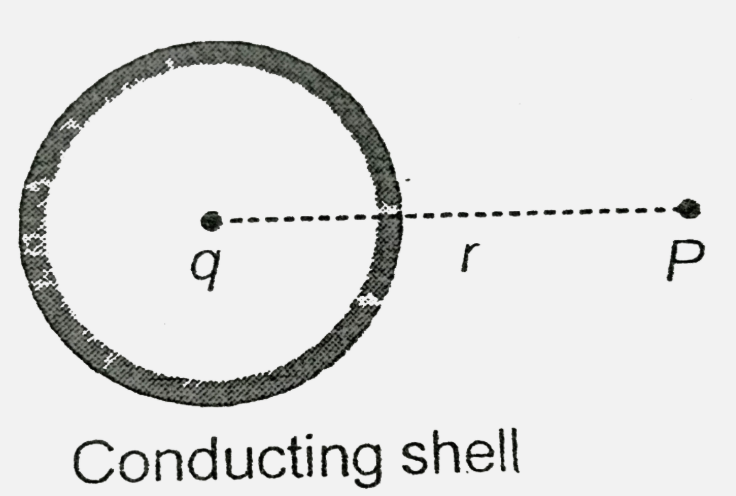
View Solution
